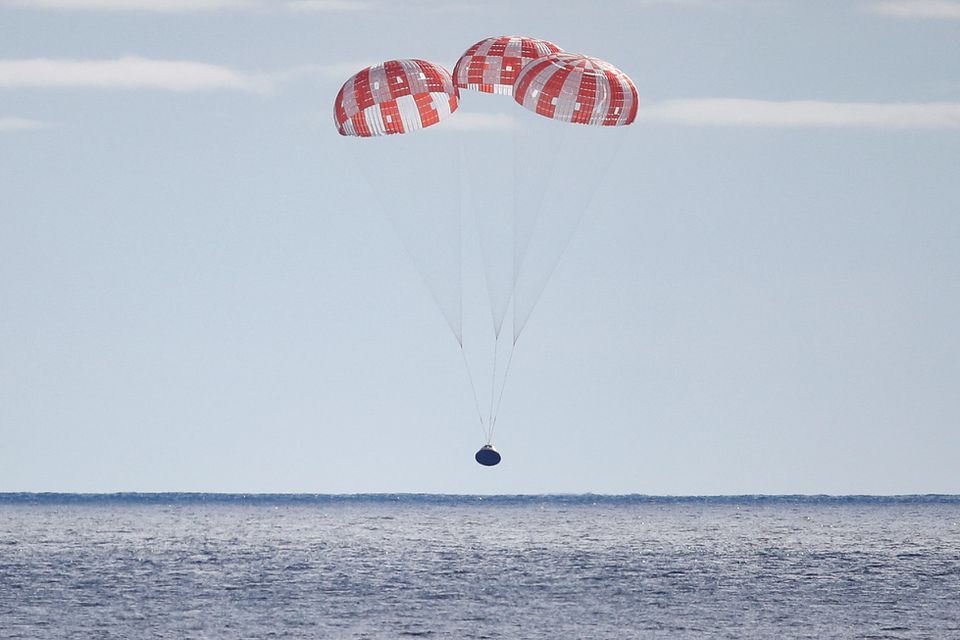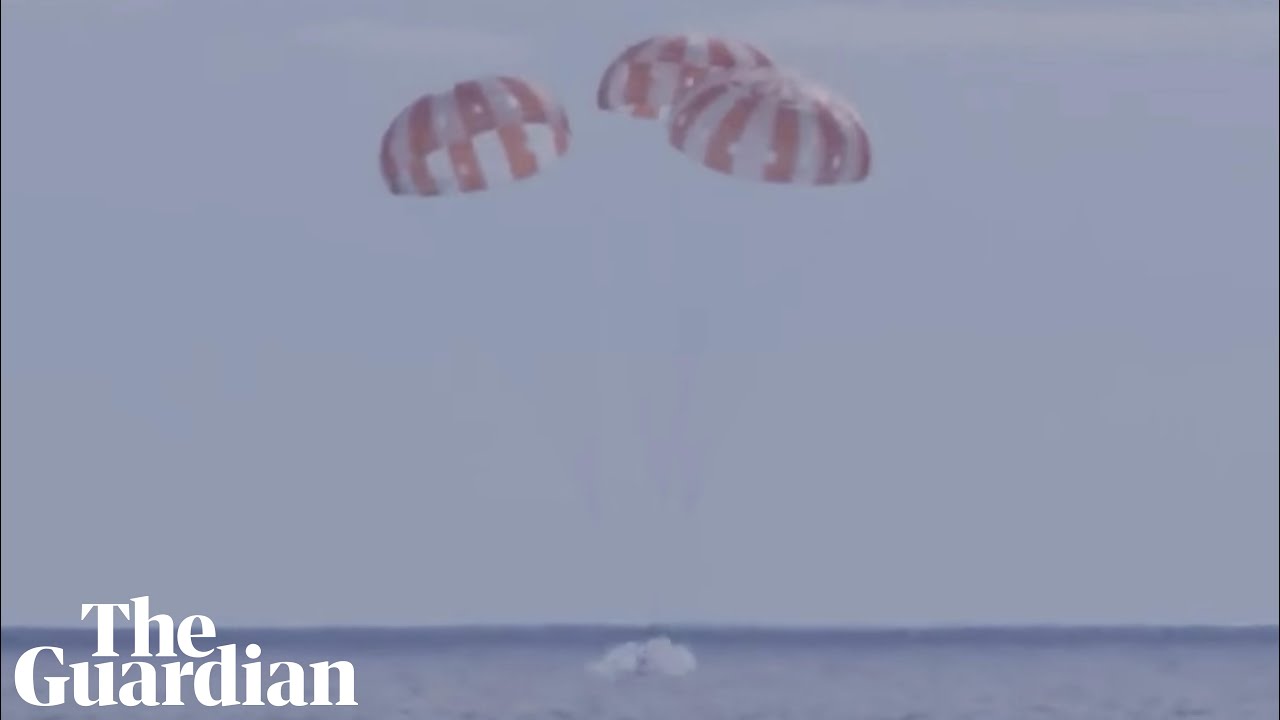The Historic Moon Mission Of NASA's Orion Capsule Ends With A Splashdown
The spaceship has been going around the Moon for three weeks, and Orion capsule ends with a splashdown in the Pacific Ocean off the coast of California. For this test flight, the capsule was without astronauts, but on its next trip, if everything goes as planned in the next few hours, astronauts will be inside.
Author:Hajra ShannonReviewer:Paula M. GrahamDec 11, 202232 Shares10.7K Views

The spaceship has been going around the Moon for three weeks, and Orion capsule ends with a splashdownin the Pacific Ocean near the coast of California. For this test flight, the capsule was without astronauts, but if everything goes as planned in the next few hours, the Orion capsule is expected to carry astronauts on its next trip.
The drop into the sea with the help of a parachute happened around 9:40 local time (17:40 GMT). The test is part of NASA's Artemis program, which aims to send people back to the surface of the moon later this decade. Sunday is the 50th anniversary of the last time this was done by the crew of Apollo 17.
“„This was a challenging mission, and this is what mission success looks like.- Mike Sarafin, NASA's Artemis I mission manager
Orion's Splashdown
After splashdown, the capsule was inspected for almost five hours by a U.S. military aircraft and a fleet of swift boats before Orion was placed onto a U.S. Naval warship and sent to San Diego, California.
The splashdown marked the end of a 25-day mission, during which the spacecraft traveled almost 270,000 miles (434,500 kilometers) from Earth and flew within approximately 79 miles (127 kilometers) of the moon during a lunar fly-by.
The spacecraft lost its service module in orbit about 30 minutes before splashdown, exposing a heatshield that reached peak temperatures of over 5,000 degrees Fahrenheit (2,760 degrees Celsius) during its blazing rapid fall into Earth's atmosphere for 20 minutes.
The capsule's initial velocity was 24,500 miles per hour (39,400 kph); atmospheric friction reduced it to 325 mph, and then two sets of parachutes helped slow it to a projected 20 mph at splashdown. Navias noted the capsule's "excellent" descent rate.
On November 16th, the capsule lifted off from Cape Canaveral, Florida, atop NASA's massive next-generation Space Launch System (SLS), the most powerful rocket in the world and the largest rocket NASA has produced since the Saturn V during the Apollo period.
The first SLS-Orion mission marked the beginning of Artemis, the successor program to Apollo, with the goal of sending humans back to the moon within the decade and building a permanent base there to pave the way for future Mars expeditions.

Nasa's Orion capsule splashes down in the Pacific after journey to the moon
What Will Happen Next?
The test crew consisted of data-gathering dummies and a Snoopy doll, but NASA administrator Michael Nelson emphasized the need to prove the spacecraft can safely return to Earth. The Artemis moon missions will be leveraged into a Mars mission program, with a considerably speedier and riskier return procedure, according to the space agency's stated goals.
During this mission, Orion swung out to a deep lunar orbit, taking the capsule further than any spacecraft meant to transport people had ever gone before. The distance covered by Orion was about 1.3 million miles (2 million kilometers).
The deployment of ten tiny satellites was a secondary objective of this mission, and this was accomplished via Orion's service module, a cylindrical attachment at the bottom of the spaceship. A Japanese mini-lunar lander and a NASA payload designed to be among the first small satellites to explore interplanetary space were among the at least four spacecraft that crashed and burned after being launched into orbit.
Stunning views of Earth and the moon's surface, as well as a fascinating "Earth rise," were obtained by the spacecraft throughout its journey. According to Nelson, the Artemis I mission so far deserves an "A" grade.
After the success of Artemis I, NASA will analyze the flight's data to choose astronauts for the possible 2024 launch of Artemis II. NASA indicated on Sunday that they anticipate making the crew announcement sometime in early 2023. Like Artemis I, Artemis II will attempt to have its crew orbit the moon without touching down.
Final Words
The European Union is set to weigh the pros and drawbacks of constructing a completely separate staff transportation system. They will have cause for reflection on the operation of their Orion service module. Service modules will continue to be supplied from Europe for the time being.
Nasa has already received the unit needed for the next Artemis mission, and construction on the third vehicle, which will be used for Artemis III, the lunar landing mission, is well underway. Artemis III is slated for launch in late 2025 or early 2026.

Hajra Shannon
Author

Paula M. Graham
Reviewer
Latest Articles
Popular Articles